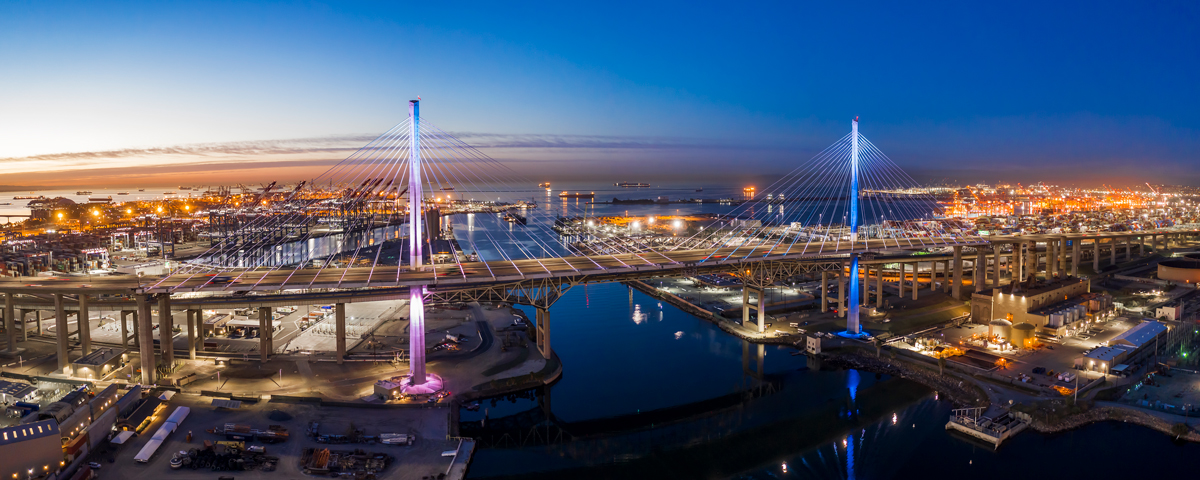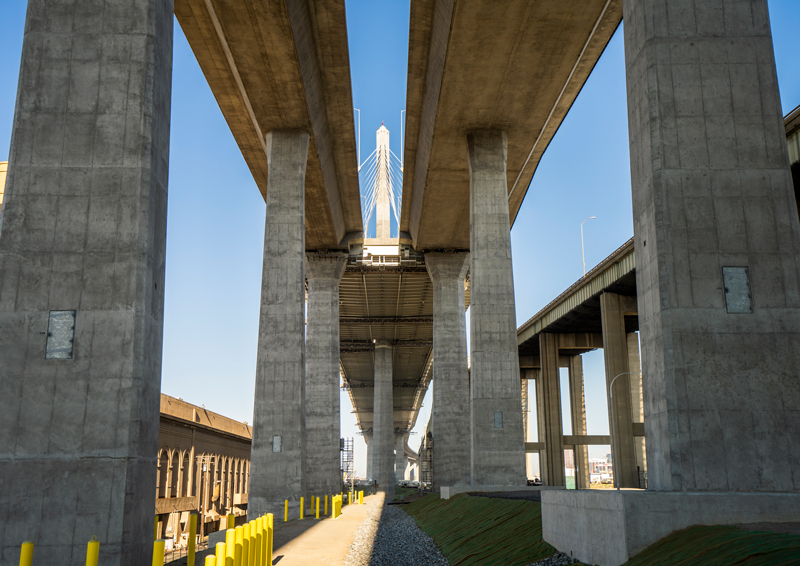The first vehicular cable-stayed bridge in California—and one of the widest in the world—the Long Beach International Gateway Bridge was designed to provide an iconic identity for the entire southern region of the state.
A Structural Icon
From the project’s earliest stages to the bridge’s completion, HNTB supported joint owners the Port of Long Beach and the California Department of Transportation, providing bridge type study; leading conceptional, preliminary and final design; and serving as Owner’s Engineer for the duration of construction. The firm is currently providing post-construction services including inspection, detailed maintenance plans and warranty services.
Formerly known as the Gerald Desmond Bridge, the new 2,000-foot-long cable-stayed bridge replaced the existing dilapidated arch bridge and includes:
- Six traffic lanes with 10-foot shoulders
- A dedicated bicycle path and pedestrian walkway
- Three scenic overlooks
- A 205-foot vertical clearance for larger cargo Panamax type ships
- Almost one mile of segmental approaches on each side of the main span
The signature bridge measures 166 feet wide, and with two single mast towers rising 515 feet into the sky, the Long Beach International Gateway Bridge is one of the tallest cable-stayed bridge in the world.
Seismic Safety and Construction Innovations
Sitting near an active seismic zone, safety and longevity were key goals for the project team. The bridge is designed to remain elastic under 1000-year seismic event, and large movement expansion joints at each end of the bridge’s main span will allow it to deflect without impacting the approach spans. The hydraulic damper system at each tower will dampen the seismic force from the superstructure allowing the towers and end piers to remain elastic. These features, in addition to a 100-year life span design , make the Long Beach International Gateway Bridge one of the most seismically advanced structures in the United States to date.
Other industry innovations of the replacement project include the first segmental construction bridge in California and only second in the US constructed by a movable scaffolding system (MSS). The use of tip-grouted, large-diameter, 180-foot-long drilled shafts reduce the foundation footprint and resulted in a safer construction site and expedited completion times, and the use of vertical heavy lift for the cable-stayed bridge pier tables.
Location: Long Beach, CA
Client: Port of Long Beach; California Department of Transportation






